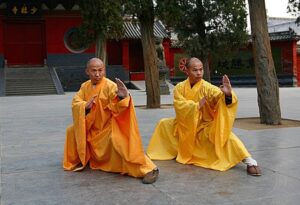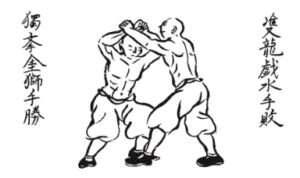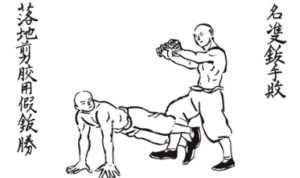Bubishi – The classic manual of combat.
Fighting techniques mentioned in the Bubishi.
While it doesn’t provide an exhaustive list, it covers a wide range of techniques and principles. Here are some examples of fighting techniques mentioned in the Bubishi:
Striking Techniques: The Bubishi describes various strikes, including punches, palm strikes, elbow strikes, knee strikes, kicks, and strikes targeting vital points on the body.
Grappling Techniques: The manual includes techniques for joint locks, throws, takedowns, and controlling an opponent in close-quarters combat.
Vital Point Attacks: The Bubishi emphasizes the knowledge and targeting of vital points on the body, such as pressure points, nerve clusters, and vulnerable areas, to disable or immobilize an opponent.
Blocking and Parrying: The manual provides techniques for blocking, deflecting, and redirecting incoming strikes to minimize damage and create openings for counterattacks.
Footwork and Evasion: The Bubishi emphasizes the importance of footwork, angles, and evasive movements to avoid attacks and gain advantageous positions in combat.
Counterattacks and Combination Techniques: The manual emphasizes the use of counterattacks and combinations to exploit an opponent’s vulnerabilities and maintain control during a fight.
Primary styles mentioned in the Bubishi.
The Bubishi is a text primarily on White Crane and Monk Fist Boxing. Those are the two primary forms of Kung-fu that served as the foundation for modern karate.
Here’s a brief overview of these styles and their associated techniques:
White Crane.
White Crane is a Chinese martial arts style known for its swift and precise movements, which emulate the grace and agility of the white crane bird. The Bubishi may include techniques from White Crane style, which typically emphasize rapid strikes, evasion, and counterattacks. White Crane techniques often involve open-hand strikes, claw-like movements, and intricate footwork patterns.
Monk Fist Boxing.

Monk Fist Boxing, also known as Luohan Quan, is a traditional Chinese martial arts style associated with Shaolin Temple. It focuses on powerful strikes, stances, and combinations. The Bubishi might contain techniques derived from Monk Fist Boxing, including strong punches, kicks, blocks, and sweeping techniques. This style emphasizes strength, discipline, and the cultivation of internal energy (qi).
It’s worth noting that the Bubishi does not provide detailed step-by-step instructions for specific techniques from these styles. Instead, it offers principles, concepts, and philosophical insights that can be applied to various martial arts techniques and styles. The Bubishi serves as a guidebook for practitioners to deepen their understanding of martial arts principles and apply them to their chosen style or system.
The 48 fighting illustrations in the Bubishi.

This section of the Bubishi is particularly fascinating as it showcases the practical application of various techniques that are still taught in various Okinawan styles. Alongside strikes, kicks, and throws, the illustrations also include locks and throws, highlighting the diverse range of techniques within the Bubishi.
Notably, one striking aspect is the absence of defenses against weapons in the illustrations. This observation sheds light on the specific focus of the “tode” (China Hand) practiced in Okinawa, emphasizing unarmed combat techniques.
The 48 illustrated techniques found in the Bubishi are considered a valuable treasure. Many esteemed Masters, including Kenwa Mabuni and Gogen Yamaguchi, attributed great importance to these techniques as they encapsulate the essence of the system and reveal the secrets of bunkai (application).
While some diagrams may have obvious interpretations for experts, many figures have sparked significant controversies and debates. Scholars and practitioners have analyzed these illustrations extensively, seeking deeper understanding and uncovering hidden insights.

Interestingly, several of these techniques can be easily identified in the Chinese katas employed by Miyagi to establish the foundations of the Goju-Ryu teaching system, as well as in other old Okinawan katas. This observation underscores the influential role of the Bubishi in the development of Goju-Ryu, as numerous figures depicting applications (bunkai) align with several Goju-ryu katas and traditional kata of Okinawa.
A careful study of these 48 figures derived from the Bubishi reveals a wealth of techniques and methods within the Quan Fa system. Martial artists can delve into the intricacies of these illustrations to gain valuable insights into Okinawan martial arts and enrich their own martial arts practice.
Concluding word.
It’s important to note that the Bubishi is a text that has been interpreted and passed down through different martial arts lineages, leading to variations in technique emphasis and understanding.
Today, the Bubishi continues to be studied and revered by martial artists around the world, serving as a testament to the enduring legacy of Okinawan martial arts and its deep roots in Chinese martial traditions. It remains an essential text for those seeking to explore the historical, technical, and philosophical aspects of martial arts.
Thanks for reading
Gert
